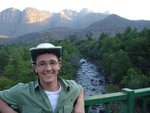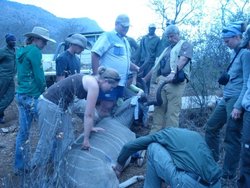The Nacho Deer
 Wednesday, January 7, 2015 at 02:06PM
Wednesday, January 7, 2015 at 02:06PM Kate Connell - Penn
Foot in Mouth Disease - Winner
Best Overall Submission - Winner
I’ve often found that the most interesting cases in the veterinary field appear on the necropsy table. Unlike human medicine, we can’t always afford to run all of the necessary diagnostics to find our disease. So the most baffling cases literally open up for exploration once the patient is deceased.
The case that I’ll lay out for you today features a deer that was brought in to a wildlife clinic in Guatemala (yes, there are deer in in Central America). At first glance, he took your breath away. Magnificent twelve point buck, glistening coat, bright eyes, and…morbidly obese. We might be used to seeing overweight cats and dogs coming to our offices, but let me tell you, seeing a fat deer is something that makes you scratch your head.
The police confiscated the deer from a man keeping it in his backyard, where it had been raised on a diet of Frito Lays and Pringles (how the name “Nacho Deer” came about). Once he was with us, Nacho Deer acted like a typical only child that had been allowed to eat cookies for breakfast and stay up late watching TV in his room. When given his vegetables, he kicked them around his pen in a bitter rampage, and volunteers weren’t allowed in the enclosure with him after too many charging incidents.
Needless to say, no one shed a tear when Nacho Deer was found suddenly dead one evening. Because it was too late to investigate cause of death, we locked him in the office (no deer-sized refrigerator in the facility) so that scavengers wouldn’t pick at him overnight. We returned to do the necropsy the next morning, and I’ve never seen such a bizarre combination of pathologies.
 Pennsylvania,
Pennsylvania,  wildlife in
wildlife in  Foot in Mouth Disease
Foot in Mouth Disease 




